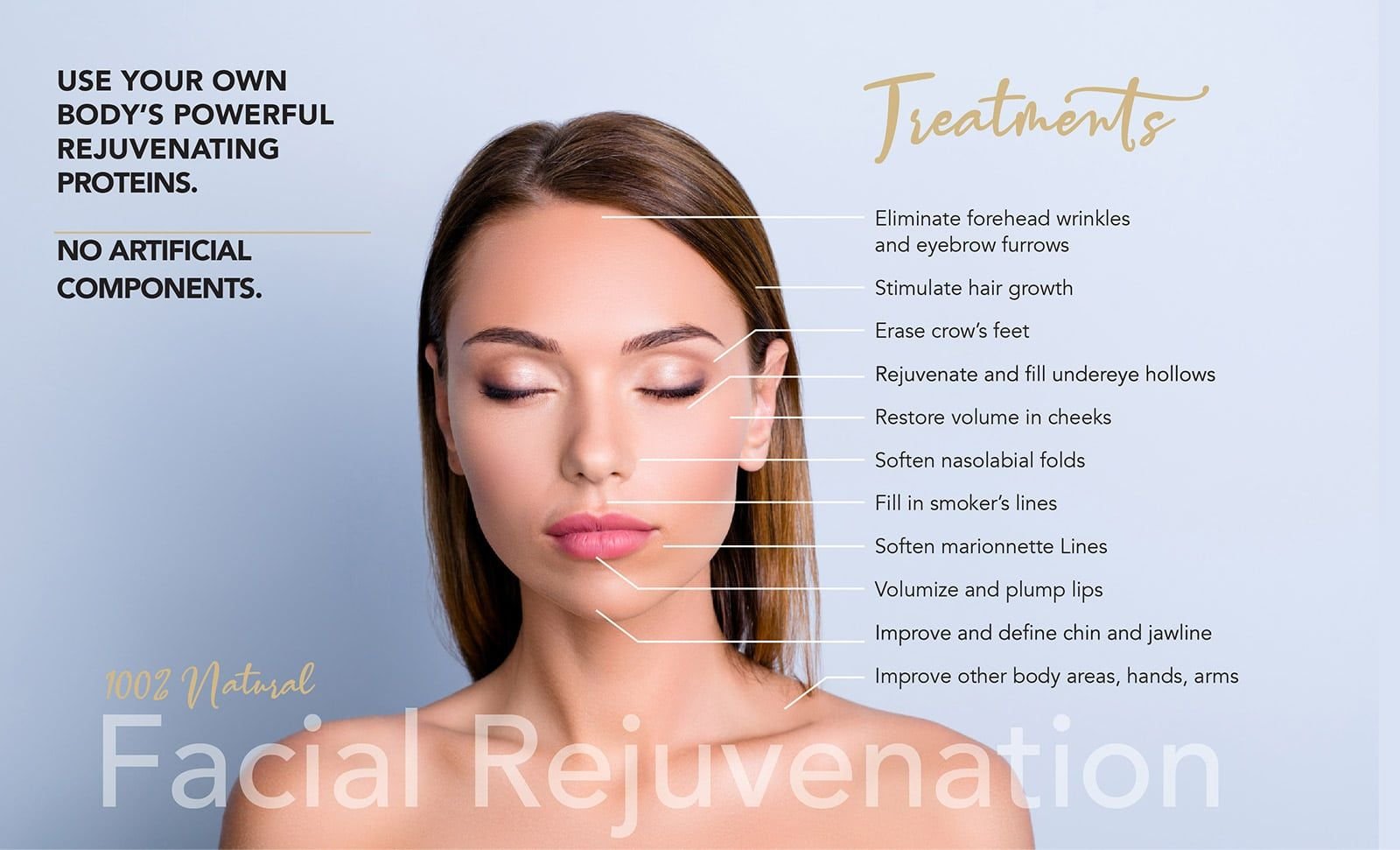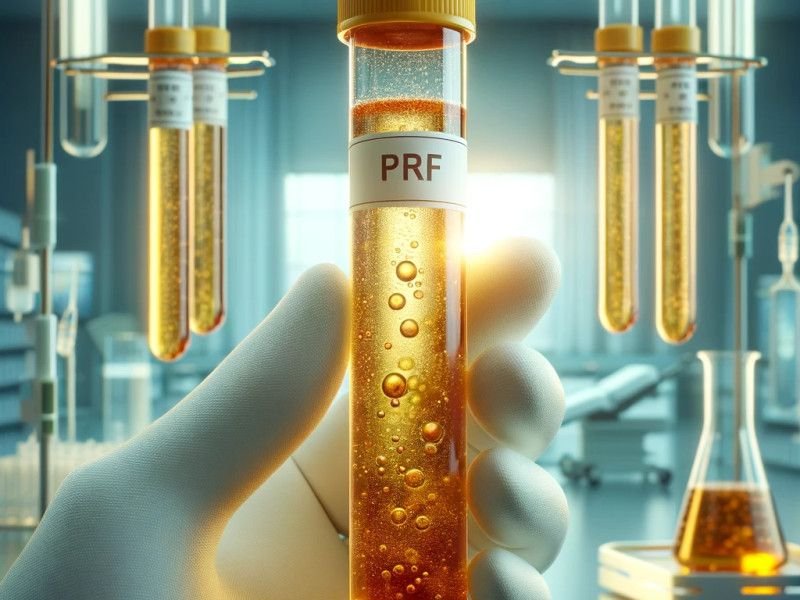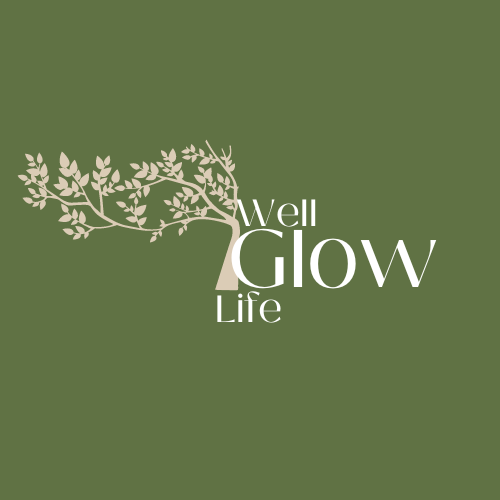Article-at-a-Glance
-
PRP (Platelet-Rich Plasma) and PRF (Platelet-Rich Fibrin) treatments can significantly improve the appearance of acne scars by promoting skin healing and collagen production.
-
PRP involves extracting your blood, processing it to concentrate the platelets, and then injecting it into the skin to rejuvenate and heal scars.
-
PRF is a newer alternative that releases growth factors over a longer period, providing a more sustained healing effect than PRP.
-
Combining PRP or PRF with microneedling can enhance results, making scars less visible by boosting collagen production.
-
It’s important to consult with a dermatologist to determine which treatment is best suited for your skin type and condition.
Why Consider PRP & PRF for Acne Scarring Discoloration
Acne scars can be a persistent reminder of past breakouts, often affecting one’s confidence and self-esteem. While there are numerous treatments available, PRP and PRF have emerged as promising options for those seeking natural healing methods. They harness the body’s own regenerative abilities, offering a unique and effective approach to skin rejuvenation.
Addressing Acne Scarring Challenges
Acne scars are not just about appearance; they can impact emotional well-being too. Addressing them requires understanding the challenges they pose:
-
Varied Types: Acne scars can be atrophic (depressed) or hypertrophic (raised), each requiring different treatment approaches.
-
Discoloration: Post-inflammatory hyperpigmentation often accompanies scars, adding to the complexity.
-
Skin Sensitivity: Many treatments can irritate sensitive skin, making it crucial to find gentle yet effective solutions.
Understanding these challenges is the first step in choosing the right treatment. This is where PRP and PRF come into play, offering solutions that work with the skin rather than against it.
Overview of PRP & PRF Treatments
PRP and PRF treatments are not just buzzwords; they represent a shift towards utilizing the body’s own healing mechanisms. Both treatments involve using components derived from your blood to promote skin healing and rejuvenation.
“PRP and PRF treatments are revolutionary in the way they use the body’s natural healing processes to address skin concerns, particularly acne scars.” — Dr. David Nazarian, a specialist in platelet-rich plasma therapy.
These treatments are designed to stimulate collagen production and accelerate the skin’s healing process. Let’s delve deeper into what each of these treatments entails.
Understanding PRP & PRF Treatments

Both PRP and PRF harness the power of platelets, but they do so in slightly different ways. Here’s a closer look at each:
What is PRP (Platelet-Rich Plasma)?
PRP therapy involves extracting a small amount of your blood, processing it to concentrate the platelets, and then injecting this platelet-rich plasma back into your skin. The high concentration of platelets releases growth factors that stimulate cell repair and collagen production.
PRP is often used in combination with other treatments like microneedling to enhance its effectiveness. This combination can lead to significant improvements in skin texture and the reduction of acne scars.
By promoting collagen growth, PRP helps to fill in atrophic scars, making them less visible over time. It’s a natural way to encourage your skin to heal itself, which is why it’s gaining popularity among dermatologists and patients alike.
What is PRF (Platelet-Rich Fibrin)?
PRF is a newer development in the field of regenerative medicine. Like PRP, it involves drawing blood, but the processing method differs. PRF is spun at a lower speed, which allows for the collection of more fibrin, white blood cells, and stem cells along with the platelets. For those interested in skin benefits, collagen boost and firm skin benefits are among the potential advantages.
This composition allows PRF to release growth factors over a longer period, providing a more sustained healing effect compared to PRP. The presence of fibrin also acts as a scaffold, supporting the healing process and collagen formation.
PRF is considered a more natural and longer-lasting alternative to PRP, with its ability to continually nourish the skin and promote regeneration.
Differences Between PRP and PRF

While both treatments utilize the healing properties of platelets, their differences lie in the preparation and release of growth factors. Here’s a comparison:
|
Aspect |
PRP |
PRF |
|---|---|---|
|
Processing Speed |
High speed centrifugation |
Low speed centrifugation |
|
Components |
Platelets |
Platelets, fibrin, white blood cells, stem cells |
|
Growth Factor Release |
Immediate |
Sustained |
|
Longevity |
Short-term |
Long-term |
Choosing between PRP and PRF depends on your specific needs and the recommendation of your dermatologist. Each offers unique benefits that can be tailored to individual skin concerns.
The Benefits of PRP & PRF for Skin Health
Both PRP and PRF treatments offer a range of benefits for enhancing skin health naturally. These treatments are celebrated for their ability to improve skin texture, reduce scar visibility, and boost the skin’s natural healing processes.
Improved Skin Texture and Collagen Production
One of the most significant advantages of PRP and PRF treatments is their ability to improve skin texture. By stimulating collagen production, these treatments help to smooth out the skin, reducing the appearance of fine lines and wrinkles.
Collagen is a protein that provides structure and strength to the skin. As we age, collagen production decreases, leading to sagging and wrinkles. PRP and PRF treatments can reverse this process, restoring a youthful appearance to the skin.
Reduction in Acne Scar Visibility
Acne scars can be stubborn, but PRP and PRF treatments offer a promising solution. By injecting these platelet-rich solutions into the skin, they work to remodel scar tissue. This process reduces the depth and visibility of scars, leading to a smoother complexion. Patients often notice a reduction in the appearance of both atrophic and hypertrophic scars, making these treatments versatile options for various scar types.
Boost in Natural Healing Processes
Our bodies have an incredible ability to heal themselves, and PRP and PRF treatments tap into this potential. These therapies enhance the natural healing processes by delivering concentrated growth factors directly to the affected areas. As a result, the skin’s repair mechanisms are accelerated, leading to quicker recovery and rejuvenation. For those interested in understanding more about the best acne treatment for oily combination skin, exploring various options can be beneficial.
Besides that, these treatments are known for their minimal side effects, as they use your own blood components, reducing the risk of adverse reactions. This makes them a safe choice for many individuals looking to improve their skin health naturally.
The Procedure: What to Expect
Understanding what to expect during PRP and PRF treatments can help ease any apprehensions you might have. Both procedures are relatively straightforward and can be completed in a dermatologist’s office.
Here’s a step-by-step breakdown of what typically happens during these treatments:
-
Consultation: Discuss your skin concerns and goals with your dermatologist to determine the best treatment plan.
-
Blood Draw: A small amount of your blood is drawn, similar to a routine blood test.
-
Processing: The blood is placed in a centrifuge to separate the platelets and, in the case of PRF, fibrin and other components.
-
Injection: The concentrated solution is injected into the areas of concern, such as acne scars.
-
Aftercare: Follow any specific aftercare instructions provided by your dermatologist to optimize results.
The entire process is usually completed within an hour, and most people can resume their daily activities immediately after. Some redness or swelling might occur, but these effects are typically short-lived. For more information on alternatives, check out platelet fibrin treatment alternatives for acne scarring.
Treatment Process for PRP
The PRP treatment process focuses on using concentrated platelets to stimulate healing. Here’s how it typically unfolds:
-
Preparation: Before the procedure, a topical numbing cream may be applied to minimize discomfort.
-
Injection: Using a fine needle, the PRP solution is injected into the targeted areas, focusing on scarred regions.
-
Multiple Sessions: For optimal results, multiple sessions may be recommended, usually spaced a few weeks apart.
Each session builds on the previous one, gradually enhancing skin texture and reducing scar visibility. Most importantly, the results are cumulative, so patience is key.
Some patients notice improvements after the first session, while others may require several treatments to achieve their desired results. It’s essential to follow your dermatologist’s recommendations for the best outcome.
Treatment Process for PRF
PRF treatment shares similarities with PRP but offers a more sustained release of growth factors. For those interested in exploring alternatives, consider reading about the best platelet fibrin treatment alternatives. The process includes:
The injection technique is similar to PRP, but the presence of fibrin allows the growth factors to be released over a longer period. This prolonged effect can lead to more significant improvements in skin texture and scar reduction.
Combining PRP/PRF with Microneedling
Combining PRP or PRF with microneedling is a powerful strategy for enhancing results. Microneedling creates tiny micro-injuries in the skin, which stimulate collagen production. When combined with PRP or PRF, the growth factors penetrate deeper, further boosting the healing process.
This combination can lead to more dramatic improvements in skin texture and scar visibility. Patients often report smoother, more even-toned skin with reduced scar depth. It’s an excellent option for those seeking comprehensive skin rejuvenation.
Real-World Results and Case Studies
Real-world results and case studies provide valuable insights into the effectiveness of PRP and PRF treatments for acne scars. Many individuals have experienced significant improvements in their skin, boosting their confidence and overall quality of life. For instance, some have found similar benefits in using products like Tetra Acid Complex Serum, which also showcases transformative skin results.
Studies have shown that these treatments can lead to noticeable reductions in scar depth and size, with minimal side effects. Patients appreciate the natural approach, as it aligns with the body’s own healing processes.
Success Stories: Before and After Examples
Consider Sarah, who struggled with acne scars for years. After a series of PRP treatments, she noticed a remarkable improvement in her skin texture. The once-prominent scars on her cheeks became less visible, and she felt more confident in her appearance.
Patient Testimonials and Satisfaction
Patient testimonials highlight the satisfaction and positive experiences associated with PRP and PRF treatments. Many individuals appreciate the minimal downtime and natural results, making these treatments a popular choice for those seeking effective acne scar solutions.
Overall, the combination of real-world results and patient satisfaction underscores the potential of PRP and PRF treatments to transform skin health naturally.
Potential Risks and Considerations
While PRP and PRF treatments offer promising results for acne scars, it’s essential to be aware of potential risks and considerations. These treatments are generally safe, but like any medical procedure, they carry some risks.
One of the main advantages of PRP and PRF is that they use your own blood components, reducing the risk of allergic reactions or infections. However, some individuals might experience mild side effects, such as redness, swelling, or bruising at the injection site. These effects are typically temporary and resolve within a few days.
“It’s crucial to discuss any concerns with your dermatologist before undergoing PRP or PRF treatments. They can provide guidance on what to expect and how to manage any potential side effects.” — Dr. Shashank B., a dermatologist specializing in regenerative therapies.
Besides that, it’s important to follow any aftercare instructions provided by your dermatologist to ensure optimal results and minimize any potential complications.
Possible Side Effects
Although rare, some individuals may experience side effects beyond the usual redness and swelling. These can include:
-
Infection at the injection site
-
Temporary discoloration or hyperpigmentation
-
Minor pain or discomfort
If you experience any unusual symptoms or prolonged side effects, it’s important to contact your healthcare provider promptly.
Who Should Avoid These Treatments?
PRP and PRF treatments are not suitable for everyone. Certain individuals should avoid these treatments or proceed with caution. These include those who might be exploring alternative acne treatments.
-
Individuals with blood disorders or clotting issues
-
Those with active skin infections or conditions
-
Pregnant or breastfeeding women
-
People on certain medications that affect blood clotting
It’s crucial to have an open and honest discussion with your dermatologist about your medical history and any medications you’re taking. This will help determine if PRP or PRF is a safe and appropriate option for you.
How to Choose the Best Option for You
Choosing between PRP and PRF treatments can be challenging, but it’s important to consider your specific skin concerns, goals, and any medical conditions. Here’s how you can make an informed decision:
Consulting with Professionals
-
Schedule a consultation with a board-certified dermatologist experienced in PRP and PRF treatments.
-
Discuss your skin concerns, treatment goals, and any medical conditions or medications.
-
Ask about the expected results, potential side effects, and recommended number of sessions.
-
Inquire about the cost and whether any combination treatments are suggested for optimal results.
Consulting with a professional ensures that you receive personalized advice tailored to your unique skin needs. For those exploring alternatives, you may want to consider platelet fibrin treatment alternatives for acne scarring.
Besides that, a dermatologist can help you weigh the benefits and risks of each treatment option, allowing you to make an informed choice.
Assessing Your Own Needs and Skin Condition
Before deciding on a treatment, take some time to assess your own needs and skin condition. Consider the following: understanding the benefits of different ingredients such as Korean red ginseng vs retinol for anti-aging can guide your choices.
-
What are your primary skin concerns? Are you more focused on reducing scar visibility or improving overall skin texture?
-
How sensitive is your skin? Do you have any known allergies or sensitivities to certain treatments?
-
What is your budget for these treatments, and are you willing to commit to multiple sessions if needed?
Understanding your own priorities and limitations will help guide your decision-making process.
Frequently Asked Questions (FAQ)
To help you make an informed decision, here are some frequently asked questions about PRP and PRF treatments:
How Long Do Results Last for PRP and PRF Treatments?
The longevity of results from PRP and PRF treatments can vary depending on individual factors such as age, skin condition, and lifestyle. Generally, results can last anywhere from six months to a year. Regular maintenance sessions may be recommended to sustain the improvements. For those exploring alternatives, you might consider platelet fibrin treatment alternatives for acne scarring.
It’s important to follow your dermatologist’s advice on the frequency of treatments to achieve and maintain the desired results.
Is There Any Downtime After These Treatments?
One of the advantages of PRP and PRF treatments is the minimal downtime associated with them. Most individuals can resume their daily activities immediately after the procedure. However, some redness or swelling may occur, which typically subsides within a few days.
Following post-treatment care instructions, such as avoiding direct sun exposure and using gentle skincare products, can help enhance recovery and results.
Platelet-rich plasma (PRP) and platelet-rich fibrin (PRF) treatments are becoming increasingly popular for addressing acne scarring and skin discoloration. These treatments leverage the body’s natural healing processes to improve skin texture and tone. For those seeking alternatives to these treatments, there are best platelet fibrin treatment alternatives that can also offer effective results. It’s important to consult with a dermatologist to determine the most suitable option for your skin type and concerns.

Leave a Reply